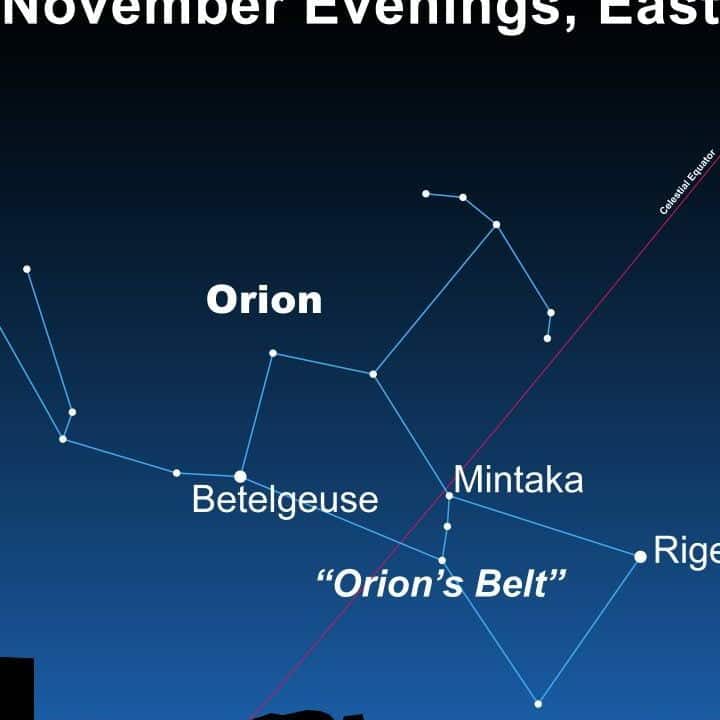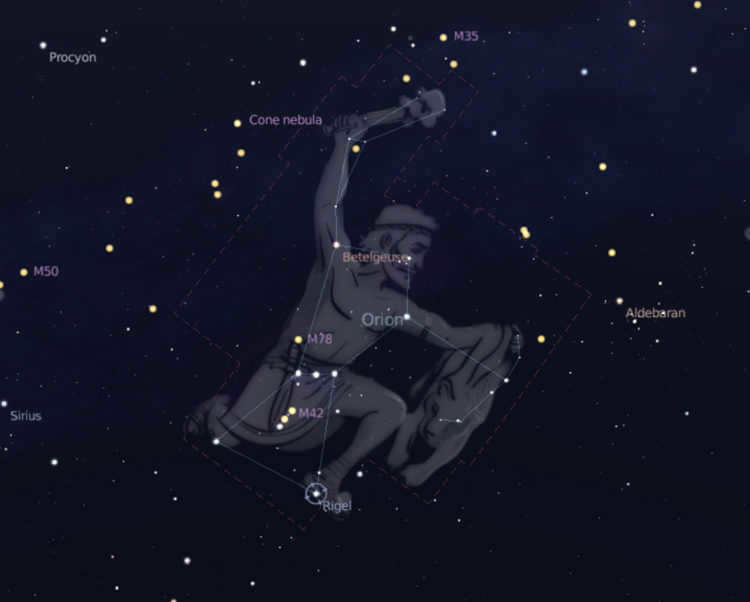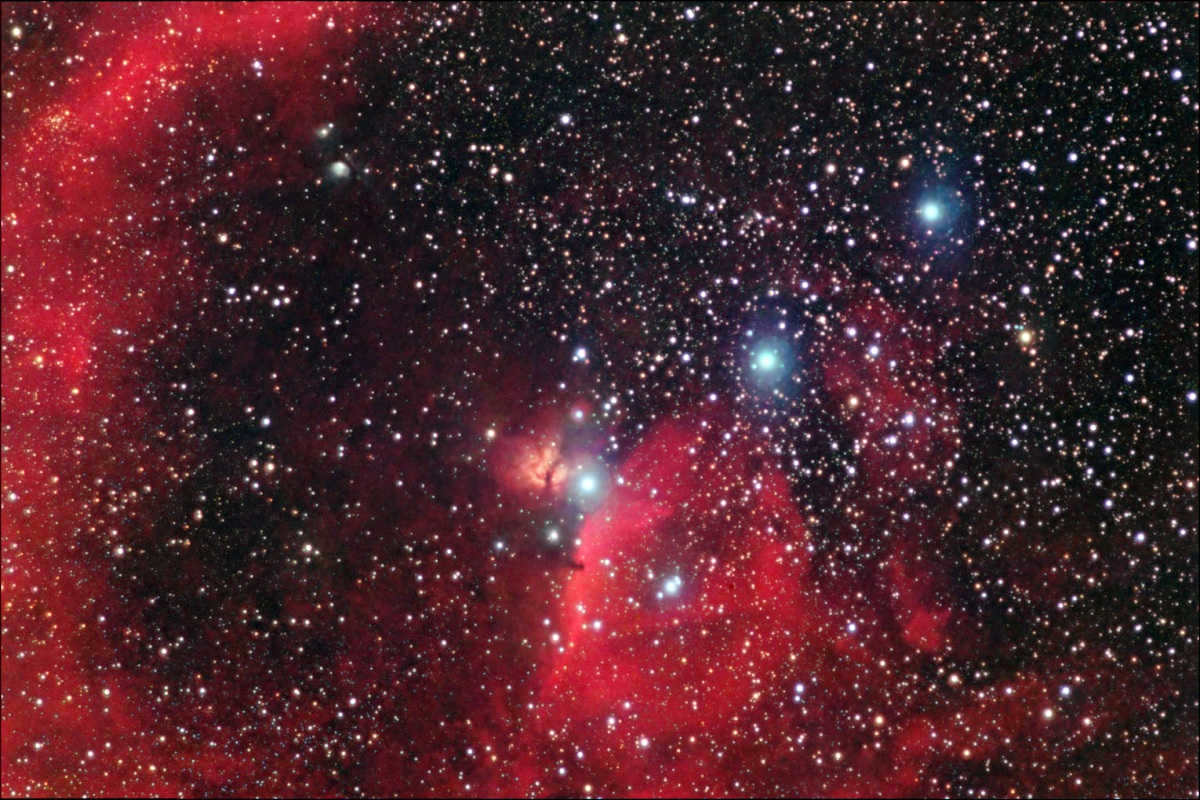
The constellation known as Orion’s belt is comprised of a trio of stars that align to form a distinctive geometric shape resembling a belt. These stars, named Alnitak, Alnilam, and Mintaka, are located in the central region of the Orion constellation, which takes the form of a mythical hunter. In Greek mythology, this arrangement is associated with the belt worn by the hunter Orion, while in Arabic folklore it is likened to a pearl necklace. The Egyptians believed that these stars served as the gateway to heaven, while the Mayans referred to them as the “three stones of the furnace.” Presently, similar formations can be observed in various parts of Mexico and other regions of Latin America, where they are known as the “Magician King” or the “three marias.”
This article aims to provide a comprehensive overview of the fascinating aspects of Orion’s belt.
Main features
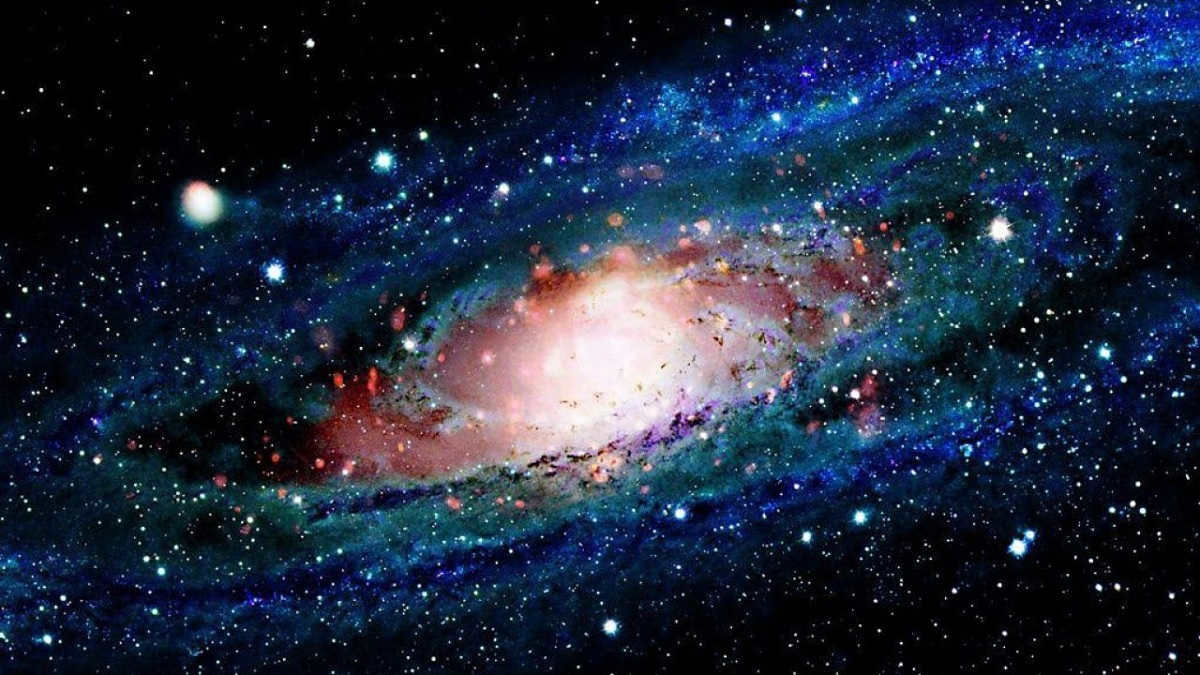
The constellation Orion contains a notable group of stars known as Orion’s belt. Its name is derived from the fact that it forms part of the image of the hunter in Orion. The three stars that make up Orion’s belt are internationally recognized as Las Tres Marias or Tres Reyes Magos, and their individual names are: Alnitak, Alnilam, and Mintaka. Here are some key characteristics of Orion’s belt:
- In countries along the equator, this constellation is visible throughout the year.
- It consists of three stars arranged in a straight line with a curved belt-like appearance.
- The constituent stars are referred to as: Alnitak, Alnilam, and Mintaka.
- These stars are located within the Milky Way, approximately 915-1359 light years away from Earth.
- Orion’s belt is a part of the larger constellation Orion.
Stars of the Orion belt
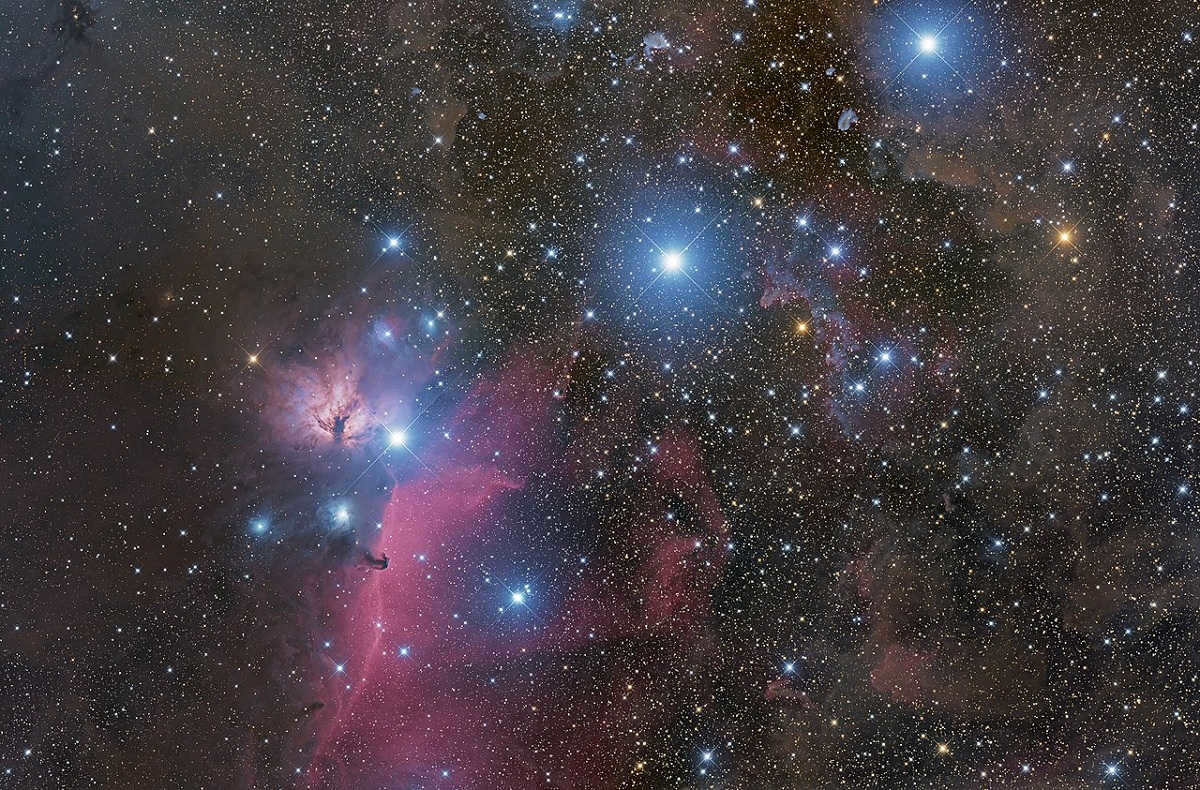
These stars are the most significant ones in the constellation of Orion’s belt:
- Alnilam: Situated in the middle of the three stars in Orion’s belt, Alnilam is a blue supergiant star with a lifespan of 4 million years. It shines the brightest and is the farthest from the belt. With a mass 40 times greater than that of the Sun and a surface temperature of 25,000 degrees Celsius, it is expected to evolve into a red supergiant.
- Alnitak: With a lifespan of 6 million years, Alnitak has a mass 16 times that of the Sun. It is located 700 light years away from us. Its surface temperature is approximately 29,000 degrees Celsius, and it is predicted to transform into a red supergiant star in the future.
- Orion’s Belt is situated in the star cluster Collinder 70, which is located at the heart of the Orion constellation, approximately 915-1359 light-years away from Earth. This cluster is positioned on the celestial equator and can be observed in close proximity to the Alnitak nebula, which is also known as the Flame and Horsehead nebulae. Additionally, Orion’s Belt is in close proximity to other constellations such as Eridanus, Taurus, Great Canada, and Little Canada.
- Belonging to the Orion constellation, Orion’s Belt holds great significance as one of the most renowned and prominent constellations in the night sky, as well as being the largest and brightest constellation within our galaxy.
The Origins and Myths Surrounding Orion’s Belt
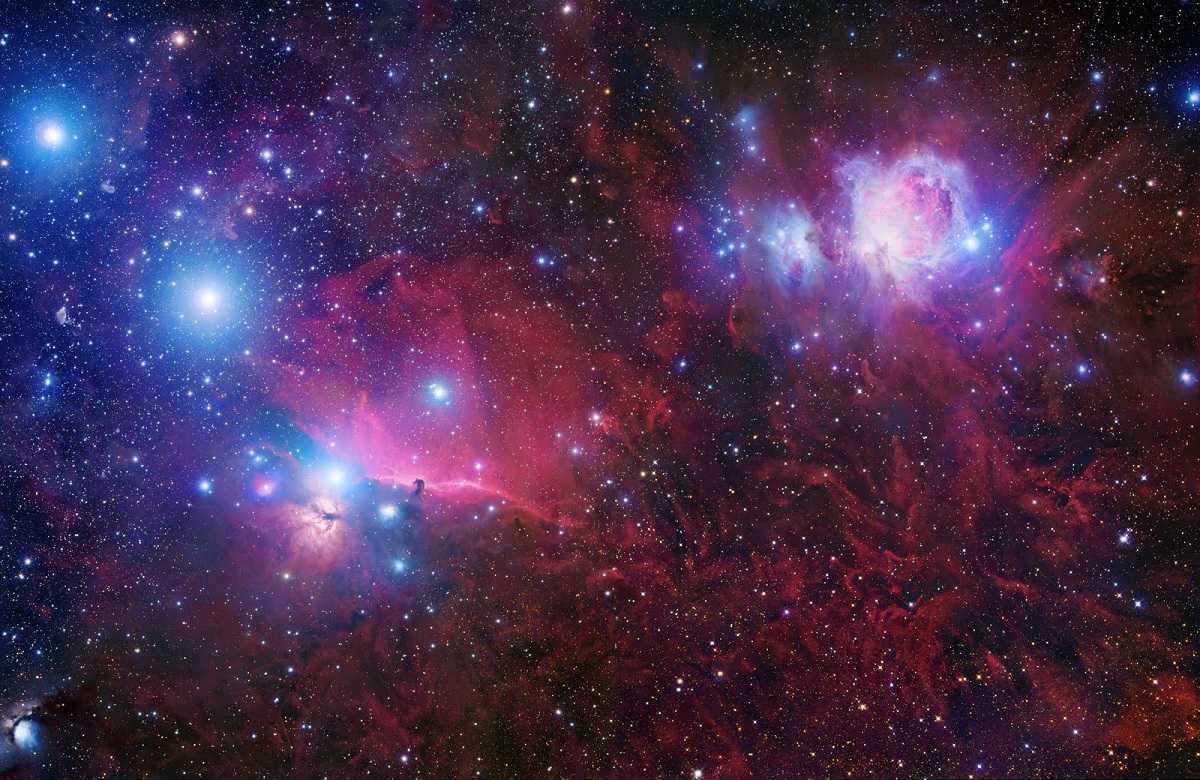
In a similar manner to other ancient cultures, the Egyptians also aligned their pyramids at Giza to correspond with the stars in the Orion constellation. Each star in Orion is directly connected to the pyramid’s vortex. The Egyptians held the belief that Orion’s belt served as the gateway to heaven, and the god who greeted the deceased was a hunter from Orion. This is why the pharaohs were buried in these pyramids.
The Mexican civilization of Teotihuacan, situated in the ruins, is another example of an ancient civilization that matched the pyramids to the stars in Orion’s belt.
- The Three Magi: The three stars in Orion’s belt are often associated with the three wise men (Melchior, Gaspar, and Balthazar) who journeyed from the east to meet the Savior Jesus and presented him with three chests of gold as a token of their faith.
- The Three Maries: The stars in Orion’s belt are known as the Tres Marias in honor of Mary, Martha, and Margot. In the era of the La Empire, three women with fair skin, blond hair, and blue eyes arrived on the shores of Mexico. They were warmly received by the indigenous people. One of the women, Maria, gave birth to a son named Izus. Eventually, they faced an attack from the followers of Ra and were forced to flee to the Iberian Peninsula. There, Maria established the city of Toledo, Martha founded Sara Gossa and Barcelona, and Margot founded Jativa.
Afterward, Marta arrived at the coast of Great Britain and ventured into the European mainland, establishing Berlin, Warsaw, and Amsterdam before finally reaching Moscow, where she met her demise. Additionally, Mary and Margo, in collaboration with Izus, established a magnificent city in the Amazon region known as Eldorado. Eventually, they journeyed to Iran and India, where Margot and the prince of the Ra Empire had a child through the influence of either Buddha or Tao.
Nebulae
The Orion Nebula is one of the most extensively researched and captured celestial entities in the nocturnal expanse, as well as one of the most investigated cosmic phenomena. Nebulae provide valuable insights into the genesis of stars and planetary systems through the condensation of gas and dust clouds.
The Horsehead Nebula is a constituent of Orion’s largest cloud. In various literary works, the nebula is depicted as a more or less impenetrable obscurity. Others speculate about the possibility of numerous stars and planets existing both in front of and beyond the nebula’s interior.
The Flame Nebula, situated within the Orion constellation, is an emission nebula. It lies approximately 1,350 light-years away from Earth, with an apparent magnitude of 2. Spanning a 30-minute arc of the celestial sphere, the Flame Nebula forms part of a vast molecular cloud complex within Orion.
With the information provided, you can gain a deeper understanding of Orion’s belt and its unique features.
This article adheres to our editorial standards and guidelines. If you find any inaccuracies, please let us know by clicking here.
For a comprehensive article on the subject, visit the section of our website dedicated to Network Meteorology and Astronomy, specifically focusing on the renowned celestial phenomenon known as Orion’s Belt.
In Greek mythology, the constellation of Orion was associated with the legendary hunter Orion, who was believed to be the son of Poseidon and Euryale. After Orion’s death, Poseidon placed him in the sky as a constellation. According to one version of the myth, Orion was killed by the arrows of the goddess Artemis, while another version suggests that he was bitten by Scorpio.
In ancient Russia, the constellation of Orion was known as Kruzhiliya or Kolo. Similarly, in Armenia, the constellation is called Hayk, in honor of the patriarch and ancestor of the Armenians. According to traditional beliefs, Hayk’s soul ascended to the sky and became frozen as the constellation Orion.
In the Inca Empire, the constellation known as Chakra was associated with Orion’s belt in the kingdom of Chimu. Pata, meaning “captured,” was the name given to Orion’s belt because it was believed that the moon sent the two outermost stars to capture the middle star, as if it were a thief or criminal. These stars were then handed over to the “Vultures” of Orion.
The Sun, Cassiopeia, Swan, Gemini, Pegasus, and the Pleiades are also depicted on a pottery vessel from the Vucedol culture. This vessel was discovered near the town of Vinkovci in Croatia and dates back to 3000-2600 BC.
The Legend of Orion
According to legend, Orion was a renowned hunter known for his slim, attractive physique and nimble movements. Accompanied by his loyal canine companions, Big Dog and Little Dog, he ventured into the forests and mountains in search of wild game. Despite his fierce hunting skills, Orion possessed a gentle heart. One fateful day, as Big Dog gave chase to a hare, the devoted canine sought refuge at Orion’s feet, seeking protection from any harm that may befall him.
Armed with an immense club and a razor-sharp sword, Orion inexplicably found himself pursuing the elusive plaids. However, his pursuit was abruptly interrupted when an enraged bull lunged at him. Fearlessly, Orion raised his right arm, wielding his heavy club, and awaited the bull’s charge. With calculated precision, he struck the mighty beast on its head, using the full force of his weapon to defend himself.
Thus, he embarked on a journey through the majestic mountains and thick forests, engaging in the pursuit of game. Eventually, he reached the enchanting island of Chios, only to meet his untimely demise due to a fateful encounter with a venomous scorpion. However, word of Orion’s tragic fate reached the ears of Aesculapus, who promptly made his way to the island of Chios with the intent of resurrecting his fallen comrade, just as he had done for others who had met a similar fate. This act of defiance did not go unnoticed by Hades, the ruler of the underworld, who grew increasingly concerned that Aesculapus was snatching away the shadows of the deceased from his domain. In an effort to protect his realm, Hades voiced his grievances to his mighty brother Zeus, the Thunderer, who decided to put an end to Aesculapus’ actions by striking him down with a bolt of lightning.
As was his custom, Zeus transformed Orion, Scorpio, and Aesculapus into constellations, allowing them to twinkle in the night sky. He positioned Aesculapus alongside Scorpius on one side, while Orion was placed on the opposite side. This ensured that Aesculapus could never revive Orion. Therefore, when the constellations Scorpio and Serpent (Aesculapus) are seen on the horizon, the constellation Orion remains hidden below the horizon line. Conversely, when the constellation Orion is visible on the horizon, Scorpio and Serpent (Aesculapus) are not present in the sky.
Description
Refactor the given text while keeping its HTML markup and making it unique using the English language.
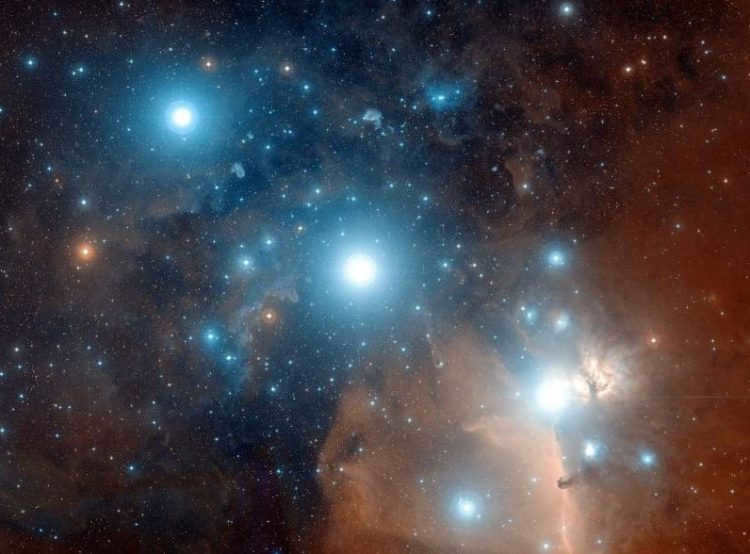
The Orion constellation is home to a multitude of hot stars belonging to the early spectral classes O and B, which come together to form a stellar association. Additionally, within the Orion constellation, there are numerous Orion variables. Among these are Taurus-type variables, which create three T-associations within the Orion constellation, as well as fuors, with Orion’s FU serving as the prototype.
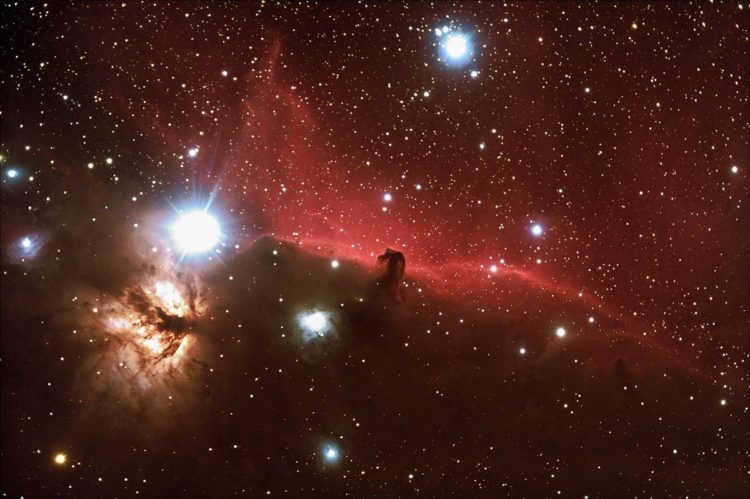
The constellation’s characteristic shape is defined by the Asterism Sheaf, which includes the stars α (Betelgeuse), β (Rigel), γ (Bellatrix), ζ (Alnitak), η (Mintaka), κ (Saif). Another name for this asterism is Butterfly.
Four asterisms are associated with different parts of the traditional constellation figure:
- The stars Mintaka, Alnilam, and Alnitak (Orion’s δ, ε, and ζ, respectively) form Orion’s Belt. This asterism is also known as the Three Kings, the Three Magi (Magi), and the Rake.
- The Sword of Orion is an asterism that includes two stars (θ and ι) and the Great Orion Nebula.
- Orion’s Shield is an asterism consisting of six stars arranged in an arc: π1, π2, π3, π4, π5, and π6. The ancient name for this asterism is Turtle Shell.
- Orion’s club – an asterism in the northern part of the constellation, composed of the five stars χ2, χ1, ν, ξ, and 69.
The Mirror of Venus and Orion’s Belt asterisms share the same stars: The handle of the Sword and star η of Orion create a diamond-shaped mirror, with the Sword of Orion asterism serving as the handle. This means that the asterism includes the stars η, δ, ε, ζ, θ, and ι of Orion.
A new asterism, known as the Saucepan Asterism, was first identified by astronomy enthusiasts in Australia. In the southern hemisphere of Earth, celestial objects, including constellations, are observed in a reversed orientation compared to their appearance in the northern hemisphere. As a result, the Mirror of Venus asterism, which is composed of the stars η, δ, ε, ζ, θ, and ι of Orion, appears inverted. The handle of the Mirror of Venus acts as the handle of a pot, while the other stars form the body of the pot itself.
The primary celestial bodies in the Orion constellation are
Rigel

Rigel (Beta Orionis) is a blue supergiant star (spectral class B8Iab) located at a distance of 772.51 light-years. It has a brightness that exceeds that of the Sun by a factor of 85,000 and a mass 17 times greater than the Sun. Rigel is classified as a variable star, with its brightness varying from 0.03 to 0.3 magnitude over a period of 22-25 days.
Rigel has an apparent visual magnitude of 0.18, making it the brightest star in the constellation of Orion and the sixth brightest star in the sky. It is a triple star system, with three objects making up the system. In 1831, F.G. Struve observed Rigel as a visual binary star surrounded by a gas shell.
Rigel A is 500 times brighter than Rigel B, which itself is a spectroscopic double star with a magnitude of 6.7. Rigel B consists of a pair of main-sequence stars (spectral class B9V) that orbit each other with a period of 9.8 days.
It belongs to the Taurus-Orion R1 association. Some argue that it would be a perfect fit for Orion’s OB1 Association, but the star is too close to our vicinity. It has an age of 10 million years. Eventually, it undergoes a transformation into a red supergiant, taking on a resemblance to Betelgeuse.
The name originates from the Arabic phrase Riǧl Ǧawza al-Yusra, meaning “left foot.” Rigel signifies Orion’s left foot. In Arabic, it was also known as il al-Shabbar, which translates to “the foot of the great one.”
Betelgeuse
Betelgeuse is a red supergiant star located in the constellation of Orion. It is one of the largest and brightest stars in the night sky. Betelgeuse is approximately 640 light-years away from Earth and has a diameter about 1,000 times that of the Sun. Due to its massive size, it is expected to explode as a supernova in the relatively near future, although the exact timing is uncertain. When it does explode, it will briefly become one of the brightest objects in the night sky, visible even during the day.
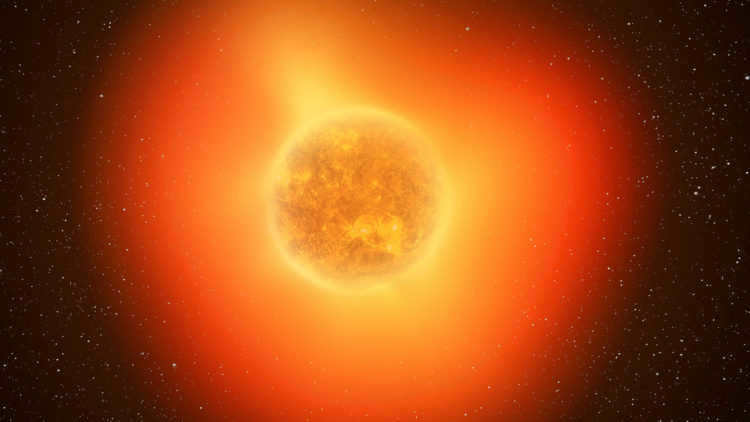
Betelgeuse, also known as Alpha Orionis or 58 Orionis, is a red supergiant star with a visual magnitude of 0.42, making it the second brightest star in the Orion constellation. It is located at a distance of 643 light-years from Earth. The star’s absolute magnitude is -6.05.
Recent scientific findings have revealed that Betelgeuse emits more light than 100,000 suns, surpassing the brightness of most stars in its class. This discovery challenges the current classification system, which may be outdated.
The apparent diameter of Betelgeuse ranges between 0.043 and 0.056 arc seconds. However, accurately measuring its diameter is incredibly challenging as the star undergoes periodic shape changes due to its massive loss of mass.
It is a semi-regular variable star with a visual magnitude that varies between 0.2 and 1.2 (sometimes surpassing Rigel). John Herschel was the first to observe it in 1836. The star is relatively young, with an age of 10 million years, which is not long enough for it to become a red supergiant. However, due to its massive size, it is believed to have undergone rapid evolution. In the next million years, it is expected to explode as a supernova. During this spectacular event, it will be visible even during the daytime, shining brighter than the Moon and becoming the brightest supernova in history.
This star is part of two asterisms: the Winter Triangle (which includes Sirius and Procyon) and the Winter Hexagon (Aldebaran, Capella, Pollux, Castor, Sirius, and Procyon).
The term “Yad al-Jawzah” in Arabic, meaning “the hands of Orion”, was corrupted to “Betleguez” in medieval Latin translation. Due to a misinterpretation, the initial Arabic letter was mistaken for b, resulting in the name “Bait al-Jauzā'” or “Orion’s house” during the Renaissance. Thus, a single error gave rise to the contemporary designation of the star.
Bellatrix
Bellatrix is a star in the constellation Orion. It is one of the brightest stars in the night sky and is located approximately 240 light-years away from Earth. Bellatrix is classified as a B-type giant star and has a surface temperature of around 22,000 degrees Celsius. The star is known for its bluish-white color and its high luminosity. Bellatrix is part of the Orion’s Belt asterism and is easily visible to the naked eye. It is a fascinating celestial object that has captivated astronomers and stargazers for centuries.
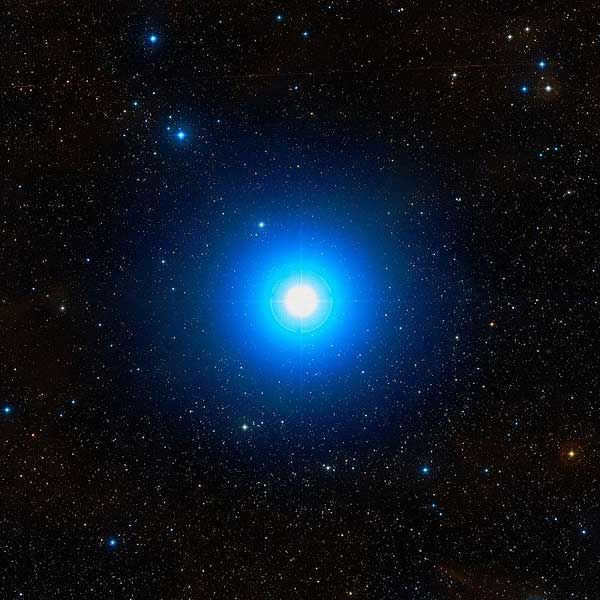
Bellatrix (Orion Gamma, 24 Orion) is a massive, shining giant star (B2 III) that appears blue-white, and its brightness changes between 1.59 and 1.64. It is located 240 light-years away. Bellatrix is one of the most scorching stars that can be seen without a telescope. It emits 6400 times more light than the Sun and comprises 8-9 times the Sun’s mass. In a few million years, Bellatrix will evolve into an orange giant and then into a massive white dwarf.
This star is sometimes known as the Amazon Star. It is the third brightest star in the Orion constellation and the 27th brightest star in the night sky. The name Bellatrix derives from the Latin word for “warrior woman.”
Mintaka
Mintaka, also known as Orion Delta, is a variable binary star system that undergoes eclipses. The primary star in this system is a B-type giant, which is accompanied by a hot O-type star. These two stars have an orbital period of 5.63 days and they alternate in brightness, with their combined brightness decreasing by 0.2 magnitudes. Located 52″ away from this binary system is a star with a magnitude of 7, as well as a faint star with a magnitude of 14.
This stellar system is located approximately 900 light years away from Earth. The primary stars in Mintaka are incredibly bright, being 90000 times more luminous than the Sun and having a combined mass that is more than 20 times that of the Sun. Eventually, both of these stars will exhaust their nuclear fuel and end their lives in spectacular supernova explosions. In terms of apparent brightness, the primary stars have magnitudes of 2.23 (3.2/3.3), 6.85, and 14.0. The name “Mintaka” originates from the Arabic word “manţaqah,” which means “region”. This star is the faintest star in Orion’s belt and the 7th brightest star in the entire constellation.
Alnilam
can be paraphrased as
The center star of Orion’s Belt
.
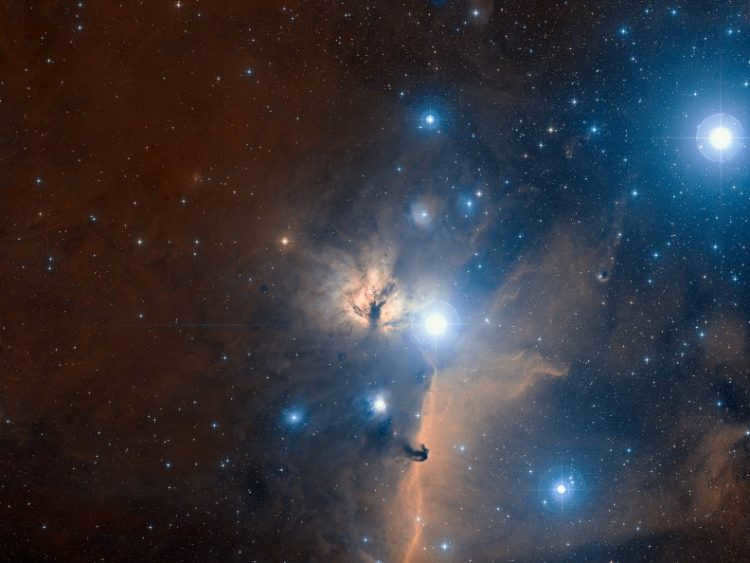
Alnilam (also known as Orion Epsilon or 46 Orion) is a supergiant star that shines with a hot, bright blue light. It has an apparent magnitude of 1.70 and is located about 1,300 light-years away from Earth. Alnilam is the fourth brightest star in the constellation of Orion and the 30th brightest star in the entire sky. It holds a central position in the belt of Orion. This star emits an incredible amount of light, equivalent to 375,000 times the luminosity of our Sun.
Alnilam is surrounded by a molecular cloud called NGC 1990. The stellar wind coming from the star reaches speeds of up to 2,000 kilometers per second. Alnilam is relatively young, at around 4 million years old. However, it is already losing mass, which indicates that its internal hydrogen fusion is nearing its end. In the near future, Alnilam will undergo a transformation and become a red supergiant, even brighter than the star Betelgeuse. Eventually, it will explode as a supernova. The name “Alnilam” comes from the Arabic word “an-niżām,” which means “string of pearls.”
Alnitak
Alnitak is a triple star system located in the constellation Orion. It is one of the three stars that form Orion’s Belt, along with Alnilam and Mintaka. Alnitak is the easternmost star in the belt and is approximately 800 light-years away from Earth. It is a blue supergiant star, with a mass about 20 times that of the Sun. Alnitak is also a part of the Orion Molecular Cloud Complex, which is a region of active star formation. This makes it an important target for astronomers studying the process of stellar birth and evolution. The name Alnitak comes from the Arabic phrase meaning “the girdle”.
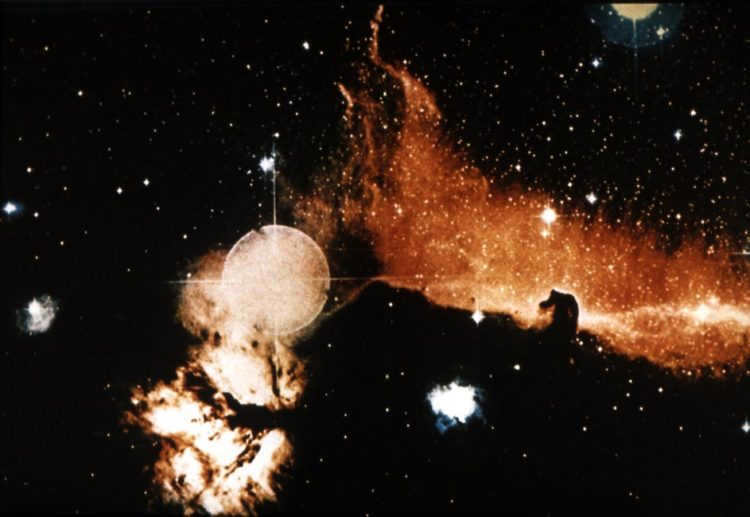
Alnitak (also known as Zeta Orionis or 50 Orion) is a multiple star system that has a visual magnitude of 1.72 and is located approximately 700 light-years away. The brightest component of this system is Alnitak A, which is a hot, blue supergiant star (spectral type O9) with an absolute magnitude of -5.25 and a visual magnitude of 2.04.
Alnitak is a close binary star system consisting of a supergiant star (spectral type O9.7) with a mass 28 times that of the Sun and a blue dwarf star (spectral type OV) with a visual magnitude of 4 (this component was discovered in 1998). The name Alnitak is derived from the Arabic word for “belt”. On February 1, 1786, the nebula associated with Alnitak was discovered by William Herschel. Alnitak is the easternmost star in the famous constellation Orion’s Belt and is located near the emission nebula IC 434.
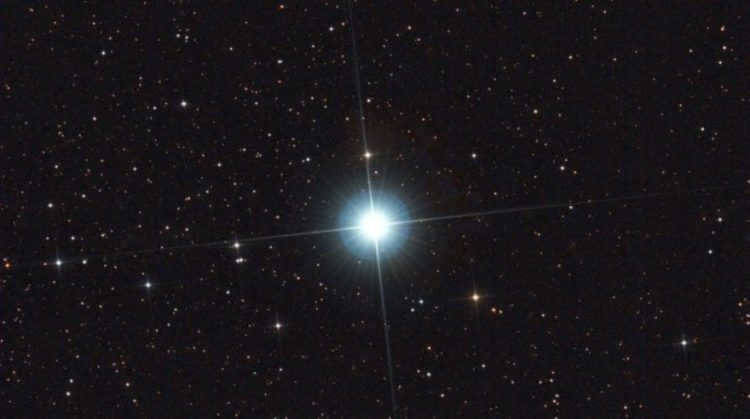
Saif (Orion’s Kappa Orion, 53 Orion) is a bright blue supergiant (B0.5) located approximately 720 light-years away. With an apparent visual magnitude of 2.06, Saif is the 6th brightest star in the night sky. It can be found in the southeastern region of the Orion quadrangle.
The name Saif is derived from the Arabic phrase “saif al jabbar,” which translates to “sword of the giant.” Like many other luminous stars in the constellation of Orion, Saif is expected to eventually undergo a supernova explosion, marking the end of its stellar life cycle.
Nair Al Saif
Nair Al Saif is a name that is not commonly heard, but it has a unique and interesting sound to it. This name is of Arabic origin and carries with it a rich cultural heritage. The meaning of Nair Al Saif is not widely known, adding to its mystique. It is a name that stands out from the crowd and is sure to leave a lasting impression. Whether it is for a person or a place, Nair Al Saif is a name that deserves recognition. Its beauty and uniqueness make it a true gem in the world of names. So next time you come across the name Nair Al Saif, remember its significance and appreciate its beauty.
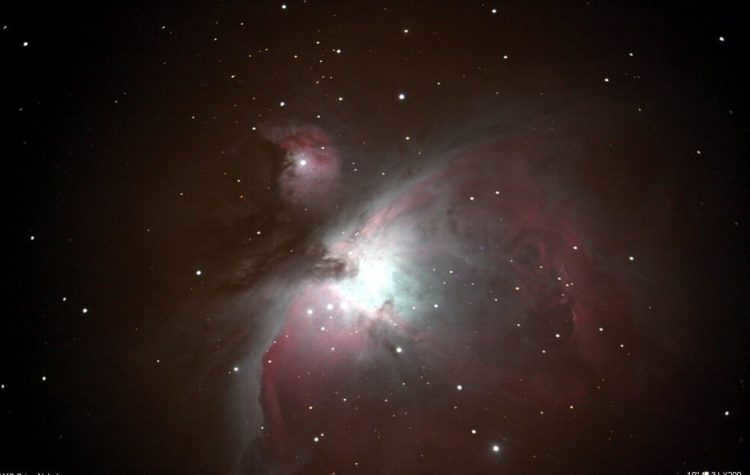
Nair Al Saif, also known as Iota of Orion, is the most prominent star system in the Orion constellation and is the brightest star in Orion’s sword. It has an apparent magnitude of 2.77 and is located approximately 1,300 light years away. The name Nair Al Saif comes from the Arabic language and translates to “bright sword.”
The primary component of this star system is a massive spectroscopic binary star with a 29-day orbital period. The binary system consists of a blue giant star (O9 III) and another star (B1 III). Due to the constant collision of stellar winds within the binary system, it emits a significant amount of X-ray radiation.
Orion’s Lambda Star
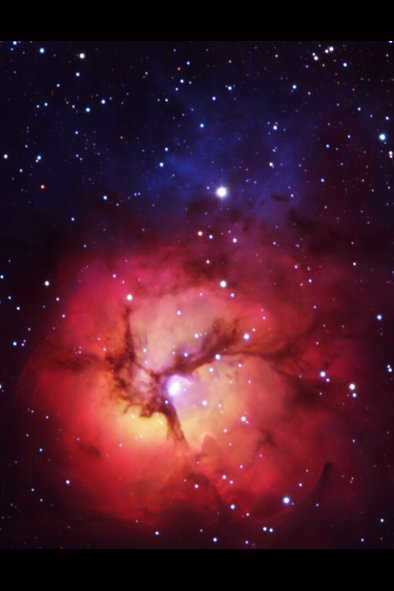
One of the stars found in the constellation of Orion is Lambda Orionis. This particular star is classified as a blue giant (O8III) and has a visual magnitude of 3.39. It is located approximately 1100 light years away from us. What makes Lambda Orionis even more interesting is that it is actually a double star. The companion star is a hot blue-white dwarf (B0.5V) and has an apparent magnitude of 5.61. It can be seen 4.4 arc seconds away from the main star.
The traditional name for Lambda Orionis is Meissa, which comes from the Arabic word meaning “shining”. Another nickname for this star is Heka, which means “white spot”.
Phi Orion is the name given to a pair of star systems that are located 0.71 degrees apart. Phi 1 consists of two stars that are situated 1000 light years away. The primary star in this system is a main-sequence star with a spectral classification of B0 and a magnitude of 4.39. On the other hand, Phi-2 is a giant star with a spectral classification of K0. It has an apparent visual magnitude of 4.09 and is located 115 light years away.
Orion’s Pi
Orion’s Pi is a loose assemblage of stars constituting the protective shield of Orion. Unlike the majority of binary and multiple stars, the components of this system are significantly spaced apart. Pi-1 and Pi-6, for instance, are separated by nearly 9 degrees.
- Pi-1 (7 Orion) stands out as the dimmest star within this system. It exists as a main-sequence white dwarf (A0) with an apparent magnitude measuring 4.60 and a distance of 120 light-years.
- Pi-2 (2 Orion), on the other hand, represents a main-sequence dwarf (A1Vn) with a visual magnitude of 4.35 and a distance of 194 light-years.
- Pi-3 (1 Orion, Tabit) constitutes a white dwarf (F6V) located 26.32 light-years away. It ranks as the brightest among the six stars, with 1.2 solar masses, 1.3 radii, and 3 times the brightness. Scientists believe that it might harbor Earth-sized planets. The term al-Tabit, derived from Arabic, translates to “patience.”
- Pi-4 (3 Orion) is a double star system that can be observed spectroscopically. It has an apparent magnitude of 3.69 and is located at a distance of 1,250 light-years. This system consists of a giant and a subgiant, both belonging to the B2 spectral class. They are so close to each other that they cannot be visually separated, even with a telescope. However, their spectra reveal their binary nature. The stars orbit around each other with a period of 9.5191 days. They have a mass that is 10 times greater than that of the Sun and a luminosity that is 16,200 and 10,800 times brighter.
- Pi-5 (8 Orion) is a star with an apparent magnitude of 3.70. It is located at a distance of 1,342 light-years.
- Pi 6 (10 Orion) is a prominent orange giant star of the K2II spectral class. It is a variable star with an average visual magnitude of 4.45. Pi 6 is located at a distance of 954 light-years.
This Orion
Eta Orionis is a binary star system consisting of two blue stars (B0.5V) that are located 900 light-years away. This system displays eclipses, which occur when one star passes in front of the other. The visual magnitude of Eta Orionis is 3.38. This star system is situated in the Orion arm, a minor spiral arm of the Milky Way galaxy. Eta Orionis can be found to the west of Orion’s Belt.
Orion’s Sigma
Orion’s Sigma is a cluster of stars located to the south of Alnitak. This star system, which is situated 1150 light-years away, consists of five stars.
The primary star in this system is the binary star Sigma Orion AB. It is made up of two hydrogen-fusing dwarfs that are separated by 0.25 arc seconds. The brighter component is a blue star (O9V) with an apparent magnitude of 4.2. Its companion is a star (B0.5V) with an apparent magnitude of 5.1. These two stars orbit each other once every 170 years.
Sigma C is a dwarf star (A2V) with an apparent magnitude of 8.79. Sigma D and E are also dwarf stars (B2V) with magnitudes of 6.62 and 6.66, respectively. E stands out due to its high helium content.
V380 Orion
can be rephrased as
V380 Orion – A New Dimension in Technology
or
Experience the Power of V380 Orion
.
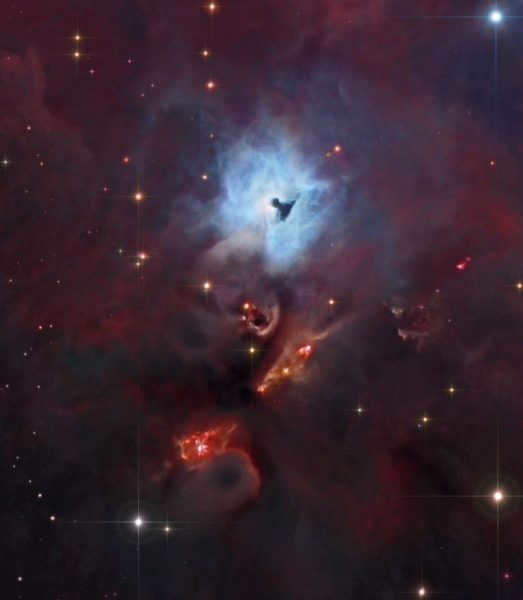
V380 in Orion is a triple star system that illuminates the reflected nebula NGC 1999. It has a spectral type of A0 and is located about 1000 light years away.
The nebula contains a large empty void that appears as a dark spot in its central region. The exact reason for its darkness is still unknown, but there is speculation that narrow jets of gas from nearby young stars may have penetrated the dusty and gaseous layers of the nebula, and the intense radiation from an older star in the vicinity may have contributed to the formation of the void. The nebula itself is situated 1,500 light-years away.
GJ 3379, an M3.5V red dwarf, possesses a visual magnitude of 11.33 and resides at a distance of 17.5 light years. There is evidence to suggest that approximately 163,000 years ago, it was a mere 4.3 light-years away from our Sun. This celestial body holds the distinction of being the closest star to our system within the Orion constellation, located just 17.5 light-years from us.
Noteworthy astronomical entities within the Orion constellation
The Amazing Orion Nebula
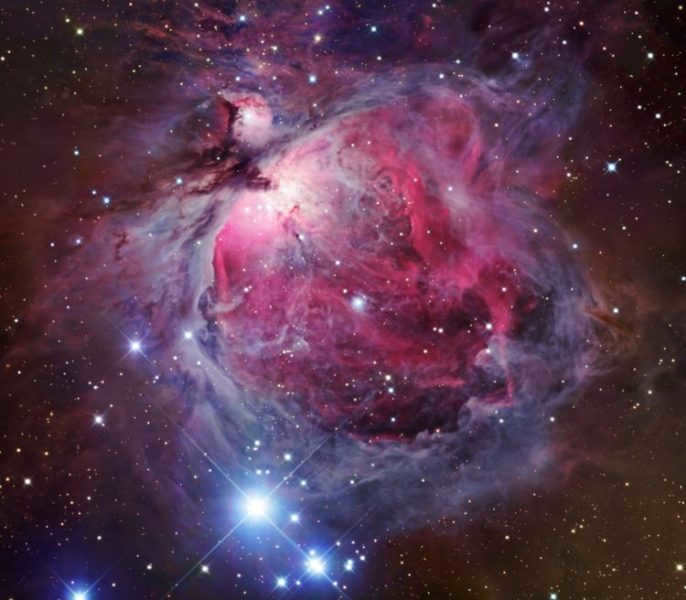
The German astronomer Johannes Cisat observed the Great Orion Nebula for the first time in 1618. This nebula is also known as M 42 (Messier 42). It is an emission nebula that emits a greenish light and can be found below Orion’s Belt. When viewed through binoculars, the nebula appears as a blurred bright patch with an undefined shape.
The average density of this gaseous or, as it is often referred to, diffuse nebula is 1017 times lower than the density of the air in a typical room. It is the most luminous diffuse nebula, covering an area of approximately 80 x 60 angular minutes, which is more than four times the size of the full Moon. This is why it is easily visible in the night sky with the naked eye, and its position on the celestial equator makes it visible from almost anywhere on Earth. The Orion Nebula is located about 1,600 light-years away from Earth and has a diameter of 33 light-years.
The Orion Nebula shines brightly. However, this light is considered “cold” and is mainly caused by luminescence processes, which are stimulated by nearby or even embedded hot stars within the nebula.
In the northern part of the nebula, there is a dark dust band that separates its northeastern section, known as M43, from the main body of the nebula.
M43 (Messier 43)
M43, also known as Messier 43, is a well-known nebula located in the constellation of Orion. This nebula is a part of the Orion Nebula, which is one of the most famous nebulae in the night sky. M43 is situated just north of the central region of the Orion Nebula and is often referred to as the “De Mairan’s Nebula” after the French astronomer Jean-Jacques Dortous de Mairan, who discovered it in 1731. The nebula is a reflection nebula, meaning that it reflects the light from nearby stars and illuminates the surrounding gas and dust. Its distinct shape and intricate details make it a popular target for amateur astronomers and astrophotographers.
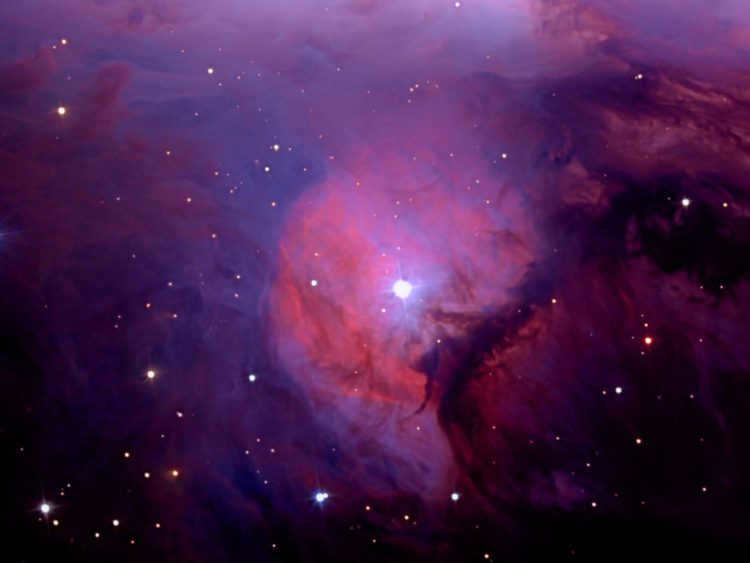
M43, also known as Messier 43, is an emission nebula located in the Orion constellation. This nebula is characterized by a high concentration of ionized hydrogen and serves as a hub for ongoing star formation activities. When observed through a telescope, M43 appears as a distinct comma-shaped structure adjacent to the more well-known Orion Nebula.
The central star in Orion’s Sword is Orion’s θ, a well-known system of multiple stars: its four bright components create a small quadrilateral, known as Orion’s Trapezium. It formed from a diffuse star cluster at the heart of the Great Orion Nebula. Additionally, there are four other dimmer stars. All of these stars are very youthful, recently emerging from interstellar gas within an unseen cloud that encompasses the entire eastern region of the Orion constellation. Only a small portion of this cloud, heated by the young stars, is visible beneath Orion’s Belt through a small telescope or even binoculars, appearing as a greenish cloud; it is the most captivating feature of the Great Orion Nebula.
In 1780, Pierre Messier discovered a group of highly reflective nebulae known as M78 (Messier 78) in the constellation Orion. This complex consists of three nebulae situated in the northeastern region of ξ.
Located half a degree northeast of the Orion Nebula is the Running Man (NGC 1977), a blue reflecting nebula accompanied by a star cluster. Together, they form a complex structure.
Situated 0.5° to the south of the eastern Belt star (ζ Orion), you can find the well-known Horsehead Nebula, a dark and distinct feature that stands out against the bright background of the nebula. This remarkable celestial object was initially observed in 1888 through photographs taken by the Harvard Observatory. Resembling the shape of a horse’s head, the Horsehead Nebula is characterized by dark dust clouds set against a backdrop of glowing red interstellar gas. The red glow is caused by the ionization of hydrogen gas behind the nebula, which is influenced by the radiation emitted by the nearest bright star, ζ Orion. The dark background of the nebula is primarily the result of light absorption by a dense layer of dust, although there are also shaded areas to the left, created by the base of the Horsehead’s neck. The gas that emanates from the nebula moves within a powerful magnetic field. At the base of the Horsehead Nebula, you can also observe bright spots, which are actually young stars in the process of formation. With a diameter of approximately 3.5 light-years, this nebula is part of the larger Orion Cloud.
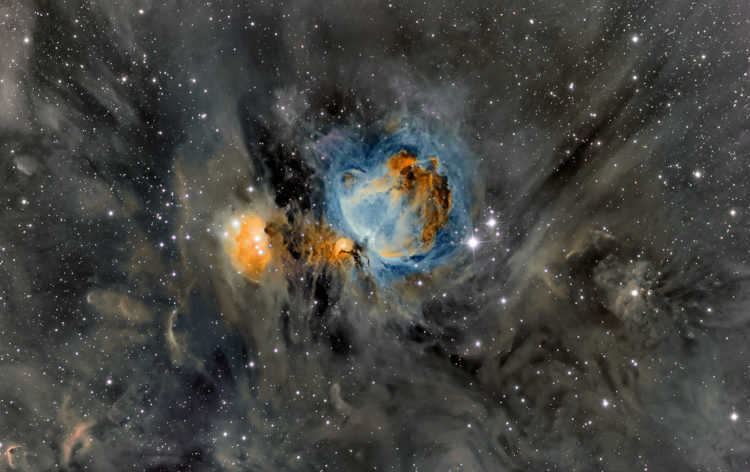
Located in the constellation Orion, the Orion Cloud is a cluster of interstellar matter (nebula) within the Milky Way galaxy. It spans a size of a few hundred sv. years and is situated at a distance of 1600 sv. years.
Occupying a vast region, the Orion Cloud is home to numerous known objects that can be observed with binoculars and amateur telescopes. These objects include the Orion Nebula (M42), M78, M43, Horsehead Nebula, Barnard’s Loop, Flame Nebula, the complex of reflective nebulae known as the Running Man, and others.
- The Flame Nebula (officially designated as NGC 2024) is an emission nebula located near the Horsehead Nebula.
- The Witch’s Head (IC 2118) is a nebula formed by supernova remnants that are illuminated by the nearby star Rigel.
- The east-south side of Barnard’s Loop, which extends in a wide semicircle, covers a significant portion of the constellation Orion. This loop is actually the remaining evidence of a series of supernova explosions. Within the Orion molecular cloud, there are active processes of star formation taking place, resulting in a multitude of young stars. The most massive stars among them go through their life stages rapidly and eventually explode as supernovae, leaving their birthplace behind. Meanwhile, the young hot stars that have not yet reached their explosive end continue to illuminate Barnard’s Loop.
- Another notable feature in the constellation Orion is the Italy Nebula (also known as NGC 2024 or the Flame Nebula), which consists of both an emission nebula and a dark nebula.
Amateur stargazers are now capable of making significant scientific breakthroughs. As an illustration, on January 23, 2004, Jay McNeil, an astronomy enthusiast from Kentucky, directed his 3″ telescope towards the constellation Orion with the intention of capturing images of the surrounding area of the M78 nebula. To his astonishment, while examining the resulting image, he came across a nebula that was not previously identified. This particular nebula has since been named the McNeil Nebula. Located at the periphery of this nebula is a prominent star which provides the illumination.
What is the method for locating the Orion constellation?
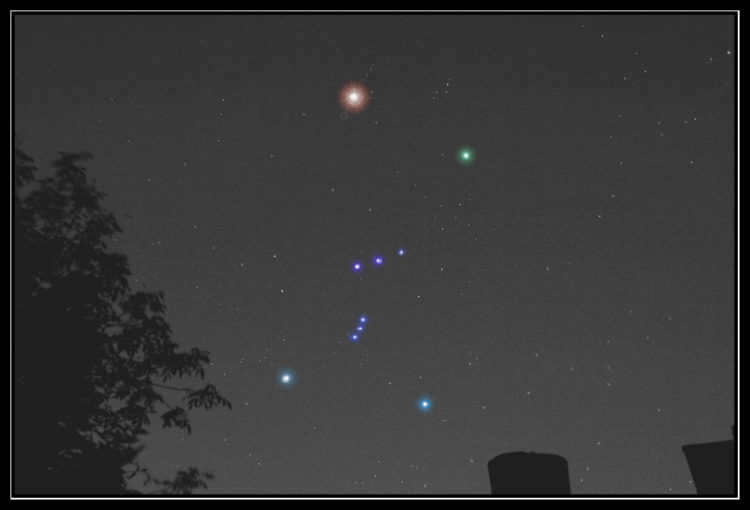
In the middle latitudes of the northern hemisphere, the constellation Orion can be observed during late summer (beginning in mid-August), autumn, winter, and the first half of spring (until mid-April). The most favorable conditions for observing Orion are in November – January, when the constellation is visible from sunrise to sunset. Orion can be seen throughout Russia. It is classified as an autumn-winter constellation based on the seasons. Specifically, in September, Orion rises in the early morning and remains visible for 2 hours before sunrise. In October, the constellation rises at night, and in November, it rises in the late evening.
If you mentally connect the stars of the belt with a line and extend it downwards, it will lead you to Sirius, the brightest star in the entire night sky and the main star of the Canis Major constellation. In September, Sirius rises about 1.5 to 2 hours before dawn in the southeastern direction. Due to its low position above the horizon, the star can flicker and radiate in various colors, resembling a precious gem illuminated by a beam of light.
Orion is considered as one of the oldest constellations, possibly known to Neolithic humans. It’s not surprising, as this constellation is impossible to miss in the winter sky and can be interpreted as the figure of a towering giant with a multitude of bright characteristic stars, dominating the southern horizon.
Orion, under different names, was recognized by various ancient cultures throughout history.
Therefore, some experts argue that in the Minoan civilization on Crete, Orion was represented by the constellation of the Axe. While it may not bear a strong resemblance to a “giant” or “giant,” it is believed to be associated with the Cretan axe known as the labris, which has a shape that closely resembles the figure of Orion.
It should be noted, however, that the notion of Minoan constellations remains highly debated.
In the eastern regions, during the Middle Ages, this constellation was referred to as the true shepherd of the heavens or The Great Shepherd Anu (SIPA.ZI.AN.NA). There is no reason to assume that the Greeks adopted this designation; they had their own observations to perceive it in the sky and give it an appropriate name. The theory proposing the existence of a constellation called Niphla identical to Orion lacks confirmation.
AceThe Big Dipper or the Hyades
Kesil.Orion.
Hima.: Pleiades
Near Babylon, in Judea, the constellation was referred to as Kᵋsīl, Kesīl → Kislev which means fool (another, more suitable option for my preference is “Giant”). Furthermore, Kislev remains the name of the Jewish calendar month, approximately corresponding to November-December, when Orion is most visible in the sky.
In the 38th chapter of the Book of Job, the Lord inquires of Job, “Do you have the ability to connect Chem and untangle the bonds of Kislev? Can you summon the constellations at their appointed times and guide As with her offspring? In truth, Job had already addressed these rhetorical queries earlier, in chapter nine, when speaking of the Lord: He alone … created As, Kesil, and Hym, as well as the hidden places of the south. (However, the identification of these biblical names is sometimes met with skepticism, and there are known variations. Specifically, Kesil is identified as Scorpio.)
In Egypt, it was Horus who was often depicted in a boat, often taking the form of a cow.
But let us return to the ancient Greeks: the constellation was also familiar to the Achaeans in the earliest days.
Orion is mentioned in the works of the most ancient Greek authors: Homer and Hesiod.
Homer, in his famous portrayal of Achilles’ shield in the Iliad, mentions the magnificent stars that adorn the sky:
Visible among them are the Pleiades, the Hyades, and the powerful Orion,
The Great Bear, which is still referred to as the Chariot by the people of the earth;
There it always revolves, always keeping watch over Orion.
And only one star remains detached to bathe in the waters of Oceanus.
In the Odyssey, the passage is almost identical: Odysseus, sailing from the realm of Calypso,
He observed the Pleiades and the late descent of Volopassus,
Also the constellation Ursa Major, also known as the Wagon.
It traverses the sky and silently watches over Orion,
And only one star is unattached to bathe in the waters of the Ocean.
In the poem “Works and Days,” Hesiod mentions the constellation four times, indicating its position in the sky during different agricultural and weather periods.
As soon as the strength of Orion starts to rise, the laborers are instructed to separate the sacred grains of Demeter…
…
Sirius is positioned high in the center of the sky alongside Orion,
The dawn, covered in rose-colored fur, is beginning to glimpse Arcturus:
Harvest, O Persian, and bring the grapes home…
…
Following the setting of the Pleiades, the Hyades, and the powerful presence of Orion,
In the west, remember that it is time for sowing…
This is how the field work is divided throughout the year…
If you choose to embark on a perilous voyage at sea, remember:
Once the fearsome might of Orion has driven away the Pleiades,
The Pleiades will descend into the misty, cloudy ocean,
The winds will blow with tremendous strength.
At this time, do not keep your ship on the dark sea,
Do not overlook my advice and engage in work on land.
The constellation of Orion can be observed beneath Taurus, positioned at an angle.
Instead of locating this constellation based on the closest star,
we identify it by the dazzling luminosity it exhibits:
The head sparkles, and on his powerful shoulders his belt shines brightly,
The scabbard of his sword emits a radiant glow, and his agile feet also glow.
April 6
. . . . . . . . . . . . . . . .
Before the conclusion of the final day’s show,
Orion will descend from the heavens into the sea wielding his starry sword.
May 11.
A Boeotian’s attempt to locate Orion will be in vain.
These three days.
June 26.
After returning home from the suburban temple, inebriated.
Glancing up at the stars, someone uttered these words:
"Your belt, Orion, today and perhaps tomorrow.
"I won’t witness it, but I will see it.
And if he hadn’t been drunk, he would have added:
"It will occur precisely on the solstice."
The constellation is included in Ptolemy’s Almagest catalog. Ptolemy documented a total of 38 stars within the constellation.
Alternate names
While the Greeks derived the name of their hero Orion from urina, some scholars derive it from the Akkadian Uru-Anna, “Light of Heaven”; although Orion is a solar hero, I have little faith in the Akkadian version. Another variation of the origin of the hero’s name: from Ὤρα, Or, the Greek goddesses of the seasons; also not very convincing. The Boeotians had a constellation called Kandaon, Κανδάων. Kandaon is an alternative name for Ares or the archaic Apollo, a warrior and inflictor of plagues, and the word “kandaon” was synonymous with “warrior”. Ancient names among the Greeks: Ϝαρίων (yes, the first letter Ϝ, digamma, actually sounded like a v), Ὠαρίων, Ὠαριώνειος, and finally, the classic Ὠρίων. Other options: Οὐρίον, Οὐρον, Ὑριών. The Latin ones are Oarion and Aorion. Descriptive and metaphorical names of the constellation used by the Latins: “Bold” (Audax), “Fierce” / “Strong” / “Stronger” (Furiosus / Fortis / Fortissimus; in the Arabs Al Babādur with a similar meaning), “He who sits on top” (Sublimata), “warrior” (Bellator and Bellatrix). Mythological themes are reflected in the titles “Son of Hirius” (Huriades, Hyreides because Orion is the son of Hyreides), Tripater from τρίπατρος (either “Triple Father” because of the three stars of Orion’s Belt, or “three-father” because in addition to the earthly “social” father Girieus, Orion had divine fathers Zeus and Hermes, see related myth), Dianae Comes and Dianae Amasius – “Companion of Danae” and “Lover of Danae” (Artemis). Speaking of fathers: due to the shape of the stellar configuration and the hero’s origin myth, Orion was depicted as a stretched bull’s hide. The impersonal Giant was quite often applied to the constellation in all cultures: in the Greeks (notably Ptolemy), the Γίγας and the Romans Gigas, Jigas, and later in Syria Gabbārā and the Arabs Jabbār. From this Arabic Jabbār, variants of Jabbār Algebra, Algebaro, Algebar, Algibbar have arisen. In the ancient Near East, there seems to have been a tradition, then inherited by the Arabs, in which Orion was regarded as the as the two Twins. (al Jauzah); the same name was applied to modern Gemini. This Arabic name is often translated in the case of Orion as “Conjugated” or “Central” (and in the case of Gemini, “Gemini”); the translation “Giant” is not correct, as we have seen, “Giant” is Jabbār. However, there is another translation of al Jauzah: a term used for a black sheep with a white spot. In an astronomical context, a bright, prominent group of stars, in our case with Orion the entire constellation, and in the case of Gemini, probably Castor and Pollux. Some identify Orion’s Belt with the ancient Arabic asterism Golden Nuts and translate the al Jauzah as “walnut”. Finally, it is believed that al Jauzah is simply a proper name. Let us settle on the traditional “Conjoined”. From this al Jauzah, European Latinizations have arisen: Elgeuze, Geuze, Jeuze, Geuzazguar. A variation of “Orion through U” appears in the 13th-century Alfons tables: Urion. Dionysius Petavius in his “Uranologion” (“Uranologion”, 1630) amusingly uses Ἀλετροπόδιον, Aletropodius, or perhaps more correctly, Ἀλητροπόδιον.: “The Knigh-turning Wanderer,” which is interpreted as the blind Orion wandering to the edge of the world in search of a cure for blindness under the rays of Helios. At Scaliger’s, we find Sugia and Asugia, then damaged from Al Shujāʽ, “serpent,” attributed for some reason to Orion. Perhaps not without the influence of neighboring Serpens. In turn, Chilmead (Chilmead) translates Asugia as “Madman”. The application of the name Saturnus is not explained.
Christian revisionism and other reformers
Christian revisionism Cesius: Jacob struggling with the angel, or Joshua, the warrior of Israel
SchillerJoseph
de Reita: The Robe of the Lord
Weigel’s “Celestial Heraldry” In his “Celestial Heraldry” (1688 – 89), Erhard Weigel suggested replacing all existing constellations with coats of arms of states, ruling houses, guilds, and similar entities. According to Weigel, Orion represents the double-headed eagle of the Roman Empire, or rather, only its body. The heads are situated in Taurus and Gemini.
In place of Orion’s Belt, Weigel placed some kind of Tignum, Brus (?) of Bohemia (but there is a lion on the coat of arms).
Christian reformers attempted to rectify the heathen celestial sphere. Cesius discovered the designation Ragulon, potentially derived from the appellation of the star Rigel, Al Rijl, and rendered it as “hero” or “flawless individual”. Consequently, he links it to Jacob contending with the Angel, or Joshua, the warrior of Israel, the leader of the Jews. Schiller believes it represents Joseph, while de Reita opines that it symbolizes the Robe of the Lord that was distributed among the Roman soldiers following the crucifixion: “The soldiers, when they had crucified Jesus, took his garments and divided them into four parts, to each soldier a part, and the chiton” (Jn. 19:23-24). Erhard Weigel substituted Orion with a Roman double-headed eagle.

There is a well-known story related to the constellation Orion, dating back to 1807 when the University of Leipzig decided to have some fun and named the stars of Orion’s Belt after the French Emperor “Napoleon Bonaparte”. Cheers for the emperor! In response, the British announced that they were officially naming the stars after Admiral Nelson. It was all just a playful prank. In an English caricature from 1805, Orion is depicted putting his belt around Napoleon’s neck, much to Napoleon’s displeasure: “What are you doing? I’d rather stay where I am.”
In the first Russian planisphere created in 1699 by Kopievsky, the constellation is described as a mighty hunter standing against the Bull [note: referring to the Belt] Three Kings.
The Three Stars in Orion
Orion’s Belt is a distinct pattern of three bright stars arranged in a line (δ, ε, ζ) that has been interpreted as a separate constellation by the Greeks. The Romans also recognized Orion’s Belt as a distinct constellation and gave it a special name: Jugula, Jugula, Jugulae. This name can be translated as “throat” / “collarbone”, “assassin”, or “gladiator” / “gladiatorial combat”. Roman poets such as Plautus and Varron mention this name for the Belt. However, there are other interpretations of Jugula. Latin authors have suggested it could mean Balteus (Girdle) or Vagina (Sheath). In Arabic, the Belt is known as Al Nijād (Girdle), Al Nasaḳ (Line), or Al Alḳāṭ (Golden Nuts/Grains/Glitter, possibly referring to walnuts because of their size). It is also referred to as Faḳār al Jauzah (Vertebrae of Jauzah), although the stars do not align with the spine as one might expect. Finally, in Arabic, it is called Al Mīzān al Ḥaḳḳ (The Crown of the Scales).
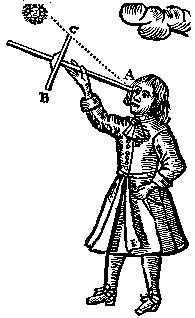
Jacob’s staff
"Practical Navigation" (1672).
John Sellers
The Baculus Jacobi (by Riccioli), Jacob’s Rod, Jacob’s Stick, or Jacob’s Staff is the new manifestation of the Staff of Jacob in modern times. It is important to note that this is not the staff of the biblical patriarch Jacob, but rather an ancient astronomical measuring instrument. It was known as a transverse rod in navigation and a radius astronomicus in astronomy. The instrument may have been invented by Jacob ben Makira or named after Jacob due to his reputation as an astrologer. Alternatively, it is possible that there was a reverse borrowing, where Orion was interpreted as Jacob in the Christian revision of Cesius. Another reference to Jacob can be found in the name of the Belt, known as Jacob’s Ladder. Completing the picture is the Staff of Peter, also known as Cingilum in the Prussian Tables of the 16th century. It is the same as the Girdle. These references to Jacob and Peter carry numerous religious allusions, including the Three Magi, the Three Kings who came to worship Christ, the Three Marys, and Our Lady’s Wand.
The initial celestial map in Russia, created by Kopievsky in 1699, reveals the Russian rendition of the Belt as “Three Tsars”. The Belt of Orion can be linked to the entire constellation known as Tripater (“Triple Father”) and Al Nusuḳ, potentially originating from Nasaḳ, meaning “Line” – Orion’s Belt.
Folklore
In the “Analytical Catalog” of folklore plots, ethnographer and specialist in comparative mythology Yuri Beryozkin documented a vast array of astronomical motifs found in various cultural traditions.
It is important to note that the reliability of astronomical information in folklore is questionable. The informants lack understanding of the celestial bodies, while folklorists have limited knowledge and interest in astronomy, as cautioned by Y. Berezkin himself. Therefore, the following compilation of information should be approached with caution.
- In Africa and Australia, there is a tale of an old man chasing the Pleiades.
- The Gottentots tell the story of the husband of the Pleiades, who was kicked out due to his poor hunting skills.
- Among the Alaska Indians, there is a legend of a hunter pursuing the kalan (Pleiades).
- In Africa, there is a folktale about a chicken and chickadee hunter chasing the Pleiades.
- In Australia, there is a myth about a pack of dingoes chasing the Pleiades-wallabies.
- A slave who followed the Pleiades children into the sky – Indonesia
- Lover of the Pleiades, attacked out of envy by his spouse (Regulus) or “red star” (Aldebaran?) – Chukchi, Tibet
- Tapir / Nandu in South American “celestial hunting” scene (including Southern Cross – legs or head, Alpha and Beta Centauri – neck or hunter and his dog, body to Antares and Serpentor, Orion’s Belt – thrown bolas, Magellanic Clouds – feathers, etc.)
- Hunter – Africa, Eurasia
- Betelgeuse: Hunter the thief blushing with embarrassment (or Venus or Aldebaran) – Siberia
- Orion and his dog (Sirius) hunting two antelopes (Pleiades and Hyades) – Africa
- Plow – Europe, Southeast Asia, India, Japan.
- Three elderly women were rescued from the fire that devastated the planet by ascending to heaven (Orion’s Belt), the Pleiades boys, and a man (Aldebaran or Betelgeuse – Argentina)
- Betelgeuse: the shared wife of the two legendary Yoaloh brothers – Chilean Indians
- Animal beings from the time of creation: Betelgeuse – female gnu, Sword and Orion’s Belt – male and female turtle, etc. – Bushmen of Southwest Africa
- Capella: mother of the star brothers; sons: the eldest Antares, Scorpion’s Tail, Aldebaran, Orion’s Belt, Bellatrix, Betelgeuse, and the younger Pleiades, Micronesia, Polynesia.
Orion’s Belt and Sword
- “A maiden carries water” / reapers – Ukrainians
- Goat, wolf, dog chasing one another – Caucasus
- Game, dog, hunter / carrier, hunter, dog – Africa
- Three dogs chasing three warthogs (Sword of Orion) – Africa
- Three zebras, occasionally (Bushmen) with an arrow soaring (not soaring) (Sword of Orion) – Africa
- Three hoofed animals (that can be hunted) – Mongols, Turks
- One animal, occasionally pierced by an arrow (bullet, center star) – Turks, America
- “Grandmother of a woman” – South America
- Orion, also known as “Curveback”, is a skilled hunter and is famous for his well-endowed manhood. His wife, Regulus, or “red star”, becomes jealous and breaks his back. This incident is represented by Orion’s Belt. Additionally, Orion shoots an arrow at the Pleiades, who were kicked out due to his large penis. This arrow is symbolized by Aldebaran. This myth is prevalent among the Chukchi and Tibetans.
- In Japan, the Plow is a significant symbol.
- In Java, the Plow represents both the Belt and Sword of Orion. The wound on the plowman’s leg is associated with Betelgeuse.
- In Europe, the symbols associated with farming include the Chain, Rake, Scythe, Sickle, and Kichiga (threshing stick).
- Scythes are commonly used for reaping and picking up cuttings.
- In regions influenced by Islam, the Scales are a recognized symbol.
- The Paddle is an important symbol in Eastern Europe.
- According to Amazonian mythology, a female kalebasa gives birth to three sons: Pleiades, Hyades, and Orion’s Belt.
The above mentioned symbols are included in the “super constellation”.
Stars Emergence in Micronesia and Polynesia
- The union of Rua-tupua-nui resulted in the birth of celestial bodies such as shooting stars, the Moon, comets, Perseus, and the Ascendant;
- The Ascendant, in turn, formed a union with Capella, and their offspring were Venus and Mercury / Antares;
- Venus then married Capricorn, and they had a son named Mars;
- Mars, in turn, fathered Fomalgaut and South Pisces;
- Subsequently, the Southern Cross, Canopus, Raven, and Saturn were born;
- Saturn, having chosen the Dome of Heaven as his spouse, gave birth to numerous small stars, including nebulae;
- Jupiter, on the other hand, has connections with the Pleiades, Orion’s Belt, and other stars in Orion, as well as Sirius;
- Sirius, in turn, has a multitude of offspring, including the Magellanic Clouds;
- Antares, Aldebaran, Spica, Dubhe, Alphard, Arcturus, Procyon, Betelgeuse, Phaetus, Polaris (and possibly Altair) serve as pillars of the sky.
The list has been copied from Wikipedia and has not been verified by me.
This constellation is known by various names in different cultures. In Russian, it is called Koromyslo, Koromyslitsa, Rake, Rakeletsy, and Kichigy (which means a curved stick for threshing). In Ukrainian, it is known as Kosari, Kosi, Politsya, and Chepigi (which are parts of a plow). In Romanian, it is called Rake, Scythe, Sickle, and Plow. Estonian names for these stars include Cepa, Stars of the Stream, Stars of the Row, and Stars of the Spear. Among the Hottentots, they are known as Three Zebras, while the North American Indians refer to them as Three Deer. Among the Khakasses, they are called Three Horses and Three Maralukhas, while the Kazakhs refer to them as Three Arkhars. Belarusians call them Three Sisters, Germans refer to them as Three Plows, and Khakasses call them Three Girls. Among the Eskimos, they are known as Three Men. The Belt is called Satsari in Georgian, Ksherk in Armenian, and Tarazy in Kazakh, all of which mean “scales”.
Wikipedia
There are various names for the constellation in Russian folklore that are related to Orion’s Belt, sometimes with the addition of a rake. These names are based on the shape of the group of stars and sometimes the number of stars in it.
- Kichigi (a type of chain used for threshing) / Kichagi / Kychigi / Morning Kichigi / Chain
- Arshinnitsa / Arshinchik / Starikova Trostochka (mentioned once)
- Rake / Rake
- Koryaga (mentioned once)
- Koromyslo / Koromyslitsa
- Three Kings / Tricar
- Maiden’s Zori
- Kashchyovy Zuby (mentioned once)
- Orzhanye Promezhki (part of the stack between the supporting stakes, mentioned once)
Maiden Zori may sound like a romantic name, but according to I. Sakharov, they are actually associated with a legend about three witches – old maidens who were said to have been transported to heaven after death. These three stars are part of the Orion’s Belt constellation, and girls used to make predictions based on them on January 4th.
Names that refer to the entire constellation are rare and not always reliable. Some examples include:
- Peter’s Cross
- Elk (similar to the Big Dipper, but with only one mention)
- Nest / Duck’s Nest (similar to the Pleiades and the Big Dipper).
IAU: International Astronomical Union
The official name of the constellation registered by the International Astronomical Union is Orion (Ori).
Cultural Significance
Balmont, “The White Architect”
In 1914, Konstantin Balmont’s collection of poems titled “The White Architect: The Sacrament of the Four Luminaries” was published by the Sirin publishing house. This collection is inspired by Balmont’s travels in various southern countries including the Canary Islands, South Africa, Australia, New Zealand, Polynesia, Ceylon, and India. One of the mentioned constellations in the southern sky is Orion.
The sea’s light ignites the wave,
With waves on the right, waves on the left,
“The breeze carries the wisps of a dormant dream,
Where the mind had long been in slumber.
That dream signified unknown paths,
That dream of distant shores,
A verse that trembles, yet to be sung,
The hidden treasure within the veils.
I am sailing away, it is my destiny,
The moments have passed and I can never retrieve them,
I will behold the shore, I will witness the abyss.
I am bound for Orion.
Sirius, far away, trembles, as the light caresses and stretches.
It is a story, it is a melody, it is a dream, a rolling wave of bells.
And how gracefully it burns in front of it, the inscription of great triumphs,
The measured chiming of three stars, Orion’s dazzling siren.
Every night Orion moves to the right,
Every night the spirit is lifted to another through the celestial song,
And one day, at an unexpected moment, above the launching of the ship,
The sign blooms, its fire sustaining the earth.
He governs the earthly circle, he commands the four winds,
At the first moment it greets us, at the hour of death it illuminates us,
He was the aspiration of various places, shining in different faces,
In the South Sea, he shone like the Southern Cross.
The Sun moves from the West to the East,
Passing through the twelve Solar Houses,
Trust the visible, though imaginary, clue,
Trust the golden and most important of the Fundamentals. Twelve starry-solar houses,
Across the Southern Cross to where Scorpio resides,
Twelve starry thresholds,
And Argo is heading towards Orion. And on Argo, the radiant glow of the fan, –
And the pitch-black darkness breathes,
“that has raised the prominent symbol of suffering,
Like the Serpent under the flag of the Southern Cross.
Not sorrow, but anguish,
A bundle of sparkling celestial bodies,
The heavenly plants form a robust pile,
A dwelling constructed by the ethereal being.
The inhabitants of Cosia slumber in vivid dreams,
Body and soul are inseparable,
And the arrow-shaped constellation of Sagittarius
Rushes endlessly in the depths.
The Raven, the Wolf, the Dragon, and the Lion,
Are embraced in a fiery hymn,
Their race is a blazing anthem,
Bright knot after knot.
In the celestial realm, our earthly existence,
Harmonize your thoughts with the heavens,
And shine like a star’s countenance,
Performing Herculean tasks.
“You will complete the cycle of achievement,
You will dare to confront a breakdown,
♪ And you will be engulfed by a fiery whirlwind ♪
A vortex of flames.
Unfazed by the winter and the cold,
Wrapping yourself tightly,
♪ Orion is prepared for the chase ♪
Orion is on his journey.
Two stars from the major leagues
In the constellation of Orion lies Rigel
In the lower right corner
Like a bow on a shoe.
And on the left shoulder strap
Betelgeuse shines brightly
♪ Three stars askew ♪
Adorn the belt
This belt is like a clue
It’s a celestial pointer
If you go to the left
You’ll discover the miraculous Sirius.
And from the right end.
The path to the Taurus constellation.
It points directly ahead
To the red eye of Aldebaran.
Natalia Tennova

Do you have any knowledge of the stars in Orion? It might surprise you to know that some of them are likely to be familiar to you. You may have heard of them at least once. These stars include Rigel, Betelgeuse, Bellatrix, and others. Let’s take a look at each of them in order, as they say.
Let’s begin with the fact that, according to one myth, a young hunter fell in love with seven beautiful nymphs – the Pleiades. Zeus transformed the nymphs into stars, concealing them from the lovestruck hunter. However, the persistent hunter continued to pursue them in the sky. Thus, the constellation itself came into existence, according to the legend, of course.
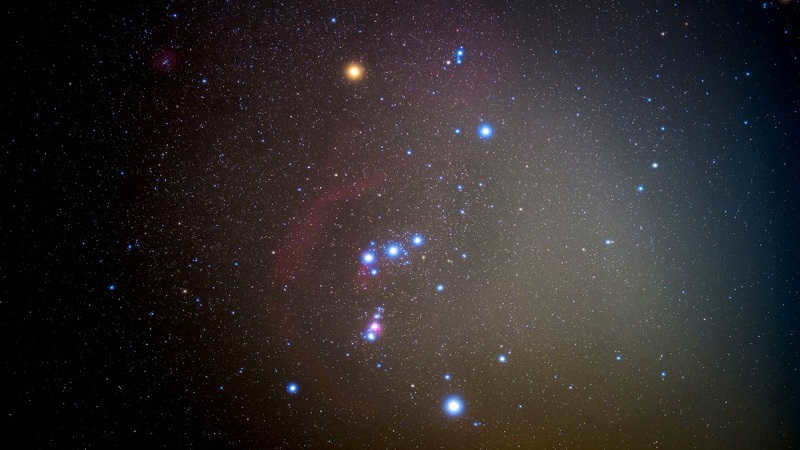
The Stars of Orion
The well-known star in the constellation Orion is Alpha, also known as Betelgeuse. This semi-regular variable stellar object is a red supergiant.
Similarly popular is Beta, which is known as Rigel. This bright luminary is a blue-white supergiant.
Another notable star is Gamma, called Bellatrix, which is a blue-white giant and one of the hottest stars visible to the naked eye.
Actually, Alpha, Beta, and Gamma have the highest brightness values within the Orion constellation. In other words, they are the brightest stars in Orion.
Nevertheless, there are several other fascinating celestial bodies that can be identified. One intriguing example is Epsilon – an exceptionally vibrant and scorching star known as Alnilam. Interestingly, it is classified as a supergiant, boasting a mass equivalent to 40 times that of our Sun. Additionally, it radiates an intense amount of light and stands out as one of the most brilliant luminaries visible in the entirety of the celestial sphere.
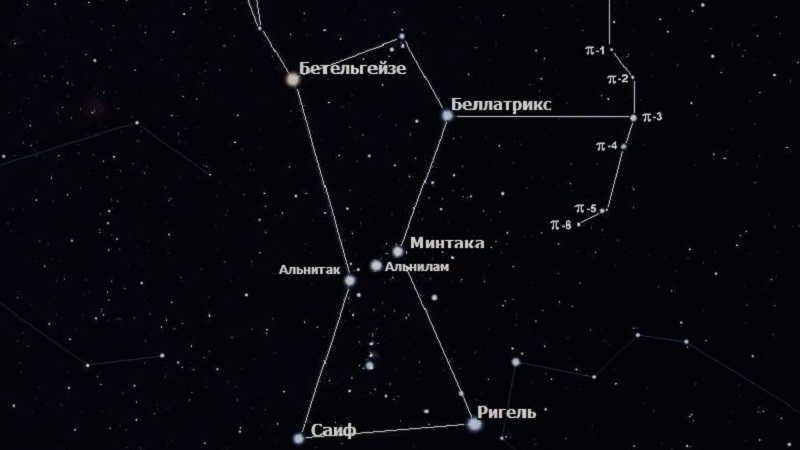
Alternatively, consider This particular star and Delta – Mintaka, which are binary systems comprising of variable stars.
Moreover, we must not overlook Sigma and Zeta – Alnitak, as they are multiple star systems. Sigma consists of six stars, while Alnitak has three components.
Furthermore, the constellation features blue supergiants, such as Lambda and Kappa. Interestingly, the latter is known as Saif. It stands out for its high temperature (being one of the hottest in the region) and luminosity (ranking sixth in the area).
Asterisms
It is worth mentioning that these constellations are not comprised of individual stars alone, but rather represent the most significant, popular, and relatively well-studied groups of celestial objects. Evidently, the constellation Orion is not only defined by an individual star, but also by the dynamic interplay of multiple luminaries.
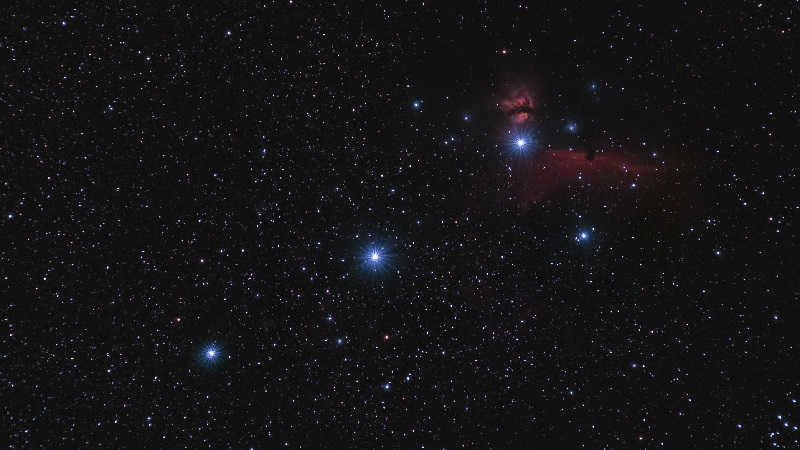

In addition, there exists another renowned arrangement of stars in the celestial narrative known as Orion’s Sword. It is comprised of merely three constituents: 42 Orion, Theta, and Iota. To be more precise, Iota can be found at the very tip of the sword. This particular celestial entity is referred to as Nair Al Saif or Hatsia. Interestingly enough, Nair Al Saif is actually a complete system of luminous bodies, or rather a binary system with distinct spectra. The primary element of this system is a blue giant of spectral classification O9III, while the secondary component is a blue-white star of class B1.
You may be familiar with the asterism known as Orion’s Belt. However, it is important to note that this is not a distinct celestial section. Instead, it refers to the formation of stars that appear to encircle the hunter figure in the sky. The belt is comprised of several relatively bright stellar objects in the region.
So, how many stars make up Orion’s Belt? There are only three: Mintaka, Alnitak, and Alnilam. These stars are all classified as blue supergiants.
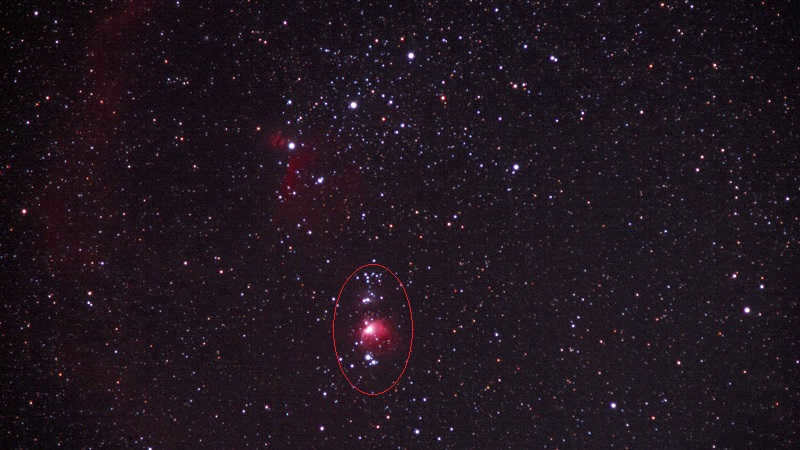

Therefore, today you have acquired some knowledge about the stars of Orion, the quantity of stars in Orion’s Belt, and in his Sword. I sincerely hope that you found this information captivating!
In Greek mythology, Orion is recognized as the son of Poseidon, a highly accomplished and mighty hunter of extraordinary height and immense physical prowess. Following his demise, Zeus transformed Orion into the constellation bearing his name. He ascended to the heavens accompanied by his loyal hunting dog, which metamorphosed into both the constellation Canis Major and the star Sirius.
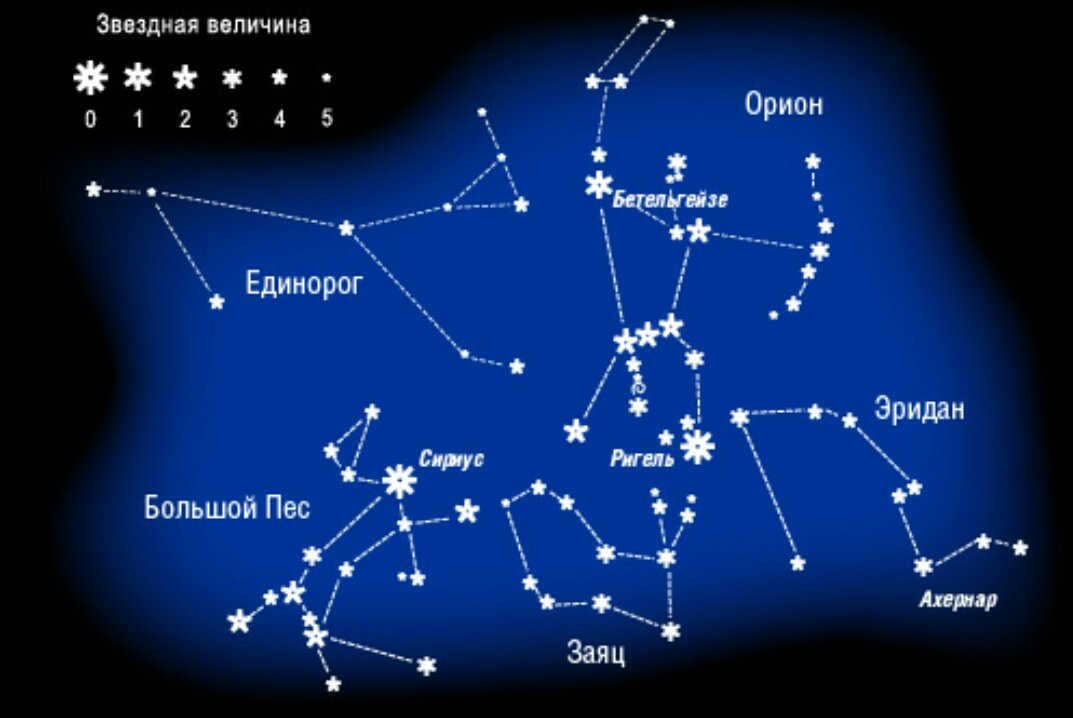
The Stars of Orion
Orion is the 26th largest constellation out of the 88 constellations. The stars in Orion are often seen as forming the shape of a hunter, connected together in a pattern. Some astronomers even interpret the pattern as the head or skin of a slain animal instead of a “bow”.
- Description: Orion is a constellation located in the region of the celestial equator.
- Area: It covers an area of 594 square degrees.
- Number of stars: There are over 200 stars in Orion.
- Brightest stars: The brightest stars in Orion are Betelgeuse, Rigel, Bellatrix, Alnilam, Alnitak, Mintaka, Hatice, and Saif.
- Adjacent constellations: Gemini, Taurus, Eridanus, Lepus, Monoceros.
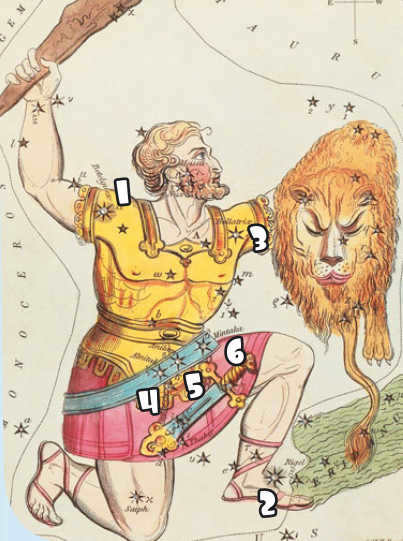
The first star in the constellation of Orion is called Betelgeuse, which means “armpit” in Arabic. The second star is Rigel, which means “foot” in Arabic. The third star is Bellatrix, which means “warrior woman, Amazon” in Latin. Orion’s belt is formed by three stars: Alnilam, which means “string of pearls” in Arabic, Alnitak, which means “girdle, cloth belt” in Arabic, and Mintaka, which means “belt” in Arabic.
One of the most well-known nebulae and among the earliest to be identified by scientists is the Horsehead Nebula. It is observed as a dark area of dust clouds (7) contrasting with the reddish glow of hydrogen clouds. When captured using a different color filter and with enhanced resolution, the Horsehead (8) no longer distinctly resembles its namesake, but it remains one of the most captivating entities in the cosmos.
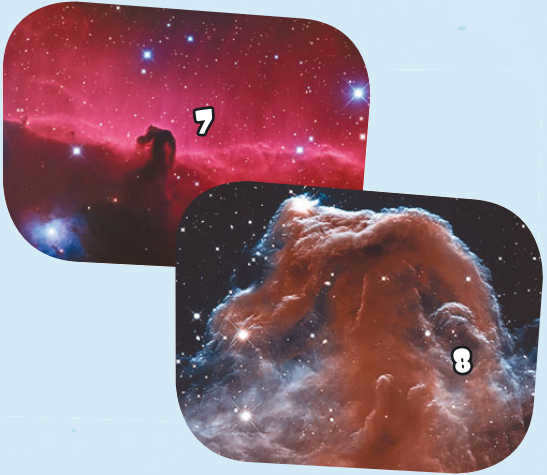
The Flame Nebula
The Flame Nebula, also known as the Torch, is located in the constellation Orion and serves as a celestial “birthing center” and nursery for stars. The dazzling luminosity of this region is a result of the abundant presence of young stars that continuously illuminate this particular corner of the cosmos. Resembling a soaring bird in shape, the Flame Nebula spans 20 light-years and is situated approximately 3000 light-years away from the Sun.
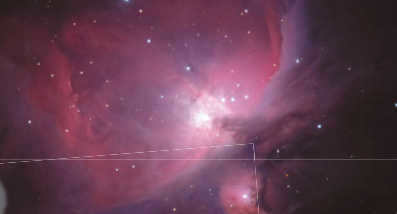
The Great Canine’s Stars
The constellation Canis Major (9) in the Southern Hemisphere is positioned to the south of Orion, close to the constellations Lepus (10) and Columba (11). The principal stars of Canis Major are beta (12) – Mirzam, delta (13) – Wesen, epsilon (14) – Adara, eta (15) – Aludra. The alpha star of Canis Major (16) is named Sirius (derived from the Greek word for “shining brightly”). It is also the most luminous star in the entire sky!
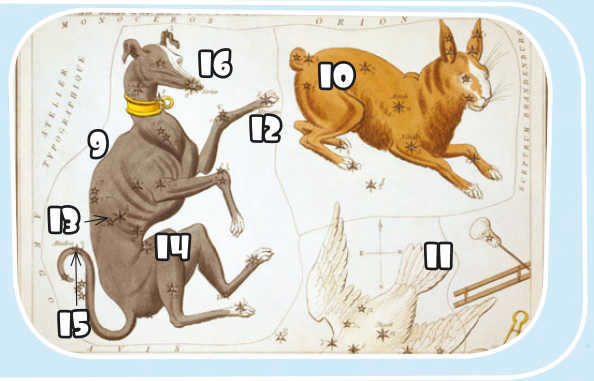
Sirius, Betelgeuse, and the colossal supergiant
Sirius, also known as the Big Dog, is a massive blue-white star that is approximately two times larger than the Sun and shines 23 times brighter. Despite its immense size, Sirius is relatively close to us, located only 8.57 light-years away, which explains its intense brightness. Betelgeuse, on the other hand, is situated in the Orion constellation at a distance ranging from 430 to 650 light-years. This star is truly colossal, being about 1,000 times larger than the Sun and emitting light that is 100,000 times brighter.
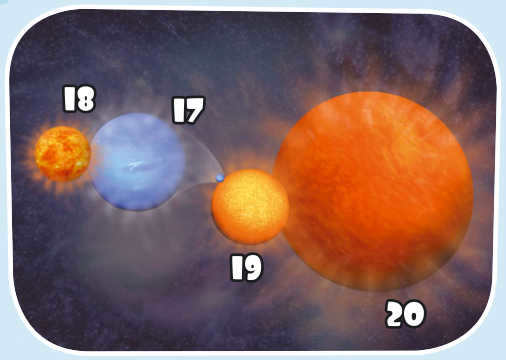
Located approximately 3,900 light-years away, there exists a truly colossal celestial entity. VY Canis Majoris, commonly referred to as the Big Dog (20), is an enormous red giant star, boasting the title of the largest star currently known to humanity. In fact, it is approximately 2,000 times larger than our own Sun and emits a luminosity that is 270,000 times more intense.

